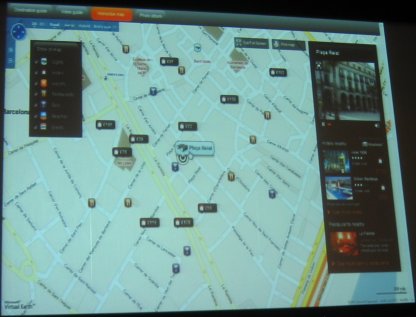I attended Microsoft’s “Heroes Happen Here” launch in London yesterday, which overlapped the US launch presented by CEO Steve Ballmer. The launch is for Visual Studio 2008, Windows Server 2008, and SQL Server 2008, though these products are in varying degrees of readiness.
The event was marred by excessive reliance on buzzwords like “Dynamic IT” – someone should tell Microsoft that phrases like this, or “People Ready” which was used for the Vista launch, have no meaning. Dr Andrew Hopkirk from UK’s National Computing Centre enthused about the general benefits of virtualization, which led to a comical moment later. I asked one of Hopkirk’s colleagues what the NCC thought about Microsoft’s Hyper-V or other virtualization technologies. “Oh, we haven’t evaluated it,” he said. “Most people use VMware and they love it”.
I hate to be disloyal, but the US event which was relayed by satellite, and which hardly any of the UK journalists watched, was more up my street. Ballmer didn’t shout too much, and I liked the drilldowns into specific features of the three products.
Still, after several dry presentations the UK event brightened up when Paul Curtis from EasyJet, a UK budget airline, showed us a proof-of-concept Silverlight application which the company plans to implement on its web site towards the end of this year. We saw an attractive Rich Internet Application which was a mash-up of flight routes and fares, Microsoft Virtual Earth, and reviews from TripAdvisor. Here’s a blurry snap of how you might book a hotel in Barcelona. It’s a compelling visual UI which of course reminded me of similar things I’ve seen implemented with Adobe’s Flash and Flex. Behind the scenes the app will use Server 2008, IIS 7.0, and a SQL Server 2008 Data Warehouse, so this is the perfect case study.

I wanted to ask Curtis whether he was happy with Silverlight’s cross-platform capabilities, and why he was using Silverlight in preference to Flash. However, his bio states that he is a member of the Windows Live Special Interest Group and on the Microsoft Architect Council, so I suspect the answer would be, “it’s what we know.” It does support my impression that despite the rise of Flash, there is still a place for Silverlight within the large Microsoft platform community.
Finally, there was brief mention of high take-up for Microsoft Softgrid, which is described as “application virtualization”. I’ve made this the subject of a separate post.
PS: I met blogger Mark Wilson at the event; he has a more detailed write-up.
Unfortunately, contrary to the original plan, I didn’t make it to the Press Launch yesterday so it is good to read here an independent’s review 🙂
I am disappointed that Silverlight “steals the show” at the launch of Visual Studio 2008. Don’t get me wrong, I think Silverlight can steal the show at any event *BUT* it is not a launch technology (given that it was released last September combined with the fact that the title of the event is “Launch of VS2008, WS2008 and SQL2008”). It is a shame because the features in the actual launched products and the benefits businesses can gain from just those 2 RTM installations and no extras, are numerous and can easily fill any keynote and any event… Also, it is not like Silverlight (or LIVE) won’t have a chance to shine (e.g. with MIX round the corner). Anyway, this is turning into a rant so I better stop, but I blame the title of your blog post that kicked me off 😉
BTW, for 6 (SIX) developer-targeted Visual Studio 2008 sessions that rely purely on a vanilla RTM installation of VS2008, I hope you are making it to the true UK 2008 Launch in Birmingham!
Hi Tim – likewise, great to meet you yesterday – and thanks for the link.
All the best, Mark
It will be interesting to see how popular Silverlight actually becomes over Flash. I don’t see it happening anytime soon but personally, I’m impressed with it.
Hi Tim,
It’s always difficult showcasing “Infrastructure software” versus a sexy UI technology like Silverlight, so it’s no surprise it stood out at the launch – thanks for the kind words though!
In answer to the question you were unable to ask, yes there is an element of “it’s what we know” but the truth is [cover your ears, Microsoft] Flash would have been just as suitable for creating the interface we developed in the POC.
The big difference, however, is the level of abstration from the underlying .NET code, and the fact that it’s much easier to run a development team that is skilled in ASP.NET and C# to integrate Silverlight versus Flash – and with Microsoft’s backing, I feel there is more chance of Silverlight succeeding as a pervasive, interactive user interface than Flash. Just an opinion….
Kind regards
Paul Curtis